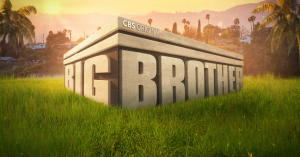Today’s TV offerings feature a lot of familiar names and faces, as the entertainment industry rushes to capitalize on existing intellectual property rights and nostalgia.
The big TV studios have been digging into their vaults lately, looking for anything that audiences might be ready to see a new take on. All over, from cable TV to the most groundbreaking streaming platforms, executives are greenlighting remakes, reboots and revivals of shows that have been around for decades.
Videos by PopCulture.com
As the trend becomes more obvious and noticeable, more and more people are wondering why this is going on. Why are studios so quick to throw money at an old idea? Why bring back a show that obviously went off the air for a good reason in the first place?
Above all, many people — especially those in creative fields — are wondering why TV studios would rather take a gamble on an old idea rather than a new one.
The answer, in its most basic form, is money. From the perspective of a TV studio, reboots are a pretty safe bet right now. There have been some enormous successes with shows that came back to air, either picking up where they left off or reimagined by a whole new team.
Undoubtedly, the well will dry up on reboots and they’ll sink back into obscurity for a while, though new versions of Star Trek will always exist. Until then, here’s a look at some of the biggest reboot success stories in recent memory.
Will & Grace
The unlikely comeback of Will & Grace has become one of the biggest reboots in sitcom history, delighting fans of the late-90s show. The series road to reboot was strange.
The cast first reunited in September of 2016 for a web skit lasting about ten minutes. In it, Will and Grace tried to convince Jack to vote for Hillary Clinton, while Karen tried to convince him to vote for Trump.
The brief reunion was so popular that the cast and creators decided to give the show another shot. In January of 2017, NBC ordered ten new episodes of the sitcom, they continued extending the deal until they reached 16 episodes. A second 13-episode season was ordered as well.
Queer Eye
While many people had written off Queer Eye for the Straight Guy as a tone-deaf remnant of the early 2000s, there was no shortage of audience for the Netflix reboot in February of 2018.
Shortened to Queer Eye, the show returned with a broader scope and a more dimensionalized premise. Many essays about the comeback have explored how the show has evolved alongside LGBTQ identity and awareness, and it’s driving audiences to tears.
Queer Eye is a prime example of how streaming platforms can use their flexibility and creative control to bring life to shows that can’t survive the network cable environment.
MacGyver
The action-adventure series MacGyver had a cultural impact that extended well past its run from 1985 to 1992, to it’s no wonder that CBS was keen to put the show back on the air.
The reboot, which hit the screen in September of 2016, brought a whole new generation into the lovably familiar territory of inventive solutions. Unlike the revival of shows like Will & Grace or Roseanne, this show doesn’t pick up where the hold one left off. It recasts its hero and puts him into the present day, allowing him to transcend the actor and become an archetype.
The show has made two new seasons so far, with more likely on the way.
The X-Files
Agents Mulder and Scully returned to TV to thunderous applause. Both stars David Duchovny and Gillian Anderson, as well as series creator Chris Carter, said on numerous occasions that they’d love to bring the show back to the air. There were rumors about a reboot for years, until finally Fox announced the comeback officially.
The tenth season of The X-Files premiered in January of 2016 to great acclaim, and the eleventh premiered in January of 2018. Gillian Anderson announced that this is going to be her last season as agent Scully, though Carter has said that he doesn’t see why the show can’t go on without her.
Hawaii Five-O
The current rendition of Hawaii Five-O has become so beloved that some younger fans may not even realize it’s a remake of a show that started in 1968. The series returned in 2010 and has since become a staple of TV dramas and police procedurals.
Hawaii Five-O‘s reboot is in the midst of its eight season, and it shows no signs of slowing down.
Dallas
Dallas, the plot-twisting drama that ran from 1978 until 1991, enjoyed a brief comeback from 2012 to 2014. The reboot was made for TNT, and featured many returning characters while focusing on a new generation as well.
The series may not have lasted long, but it was a stepping stone in the rise in popularity of reboots. It showed a generation that grew up on the original show that it was possible to bring back their childhood favorites, and once those floodgates opened, they couldn’t be closed.
Dallas may have created the demand which is now being over-supplied.
Lethal Weapon
Lethal Weapon proved that reboots didn’t have to stop at older TV shows. The longstanding series of movies fit perfectly into the new “golden age” of television, where producers had the freedom to do much more with it than was possible on network TV before.
The reboot has been a steady workhorse for Fox ever since it premiered, and it shows no signs of slowing down. There are rumors that a new movie might be on the horizon as well, helping to promote the show and vice versa.
Bates Motel
Bates Motel is another example of TV lending its power to an established film franchise. For an audience that just wants more of everything, this kind of show is a sure fire success. It brings the psychological thrill of a classic and familiar film to their screen every week, promising a reliable entertainment experience.
The show also did a lot of business on Netflix. It proved the depth of America’s interest in its own culture — reaching back into a century of iconography to create a new take on a now-classic cinematic myth.
Community
The meta-sitcom that promised fans “six seasons and a movie” practically from the beginning somehow paid off half of that promise when Yahoo bought the rights for its ambitious streaming service. Community began as the underdog of NBC’s programming and fought for its life every step of the way.
The show saw a constant influx of fan support and petitions to keep it alive. Many thought its days were numbered when the series’ creator, Dan Harmon, was fired at the end of the third season. However, after an uncomfortable run of episodes that may or may not have been a dream sequence, he returned for season 5 to the delight of die-hard fans.
That was all NBC could take, however, and it was only by the grace of Yahoo that season 6 exists. The company staked its dreams of streaming dominance on the series, and ultimately, it wasn’t enough.
Still, Community is an amazing example of what a platform can do to save a show, what fan outcry is worth to executives, and, perhaps most interestingly, how creators and their staff will adapt to changing conditions.








